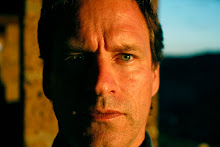
St. Olaf magazine was looking for a photo that would illustrate the idea of philosophy and nature. Originally I'd hoped to photograph a scene of night stars, with a building of some sort tiny and low on the horizon in the foreground. I wanted to indicate a human presence, small and fragile, under the vastness of the ever-spinning cosmos. Unfortunately, the call for the image came during a long stretch of cloud cover. I went to Wild River State Park on the day of the winter solstice, hoping for some kind of inspiration, and found this lovely burr oak on one of the park's large tallgrass prairie meadows. At dusk, when the light spectrum shifts to blue, I tried a variety of several-minute-long exposures, framing myself in the image as a silhouette, above, and moving through the image with my flashlight, below. I don't know yet if either made the cut, but I loved the experiment.


